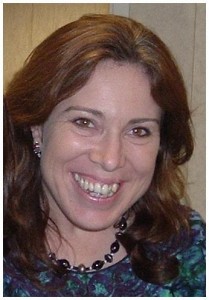Trauma expert, clinical social worker and Ph.D. candidate Sarah Crawford-Browne, from Cape Town, South Africa, describes her own experience of post-traumatic stress disorder (PTSD). She describes the overwork that likely contributed to her state of vulnerability, and how coming up with names for what she was experiencing helped her recover. As told to Carolyn Yoder.
One day, I witnessed a double murder/assassination whilst looking out my living room window. I had just spent five years working with trauma in Sierra Leone, Pakistan, Afghanistan, Uganda and Sudan. Now I was head of service at a trauma center in Cape Town.
The center runs a 24-hour response service to crises in the city, so when I saw the murders, I grabbed my neon-colored response jacket and my response backpack and went down to help. I was involved the full night. Due to the demands of my resource-challenged center, I went right on to work the next day without sleeping.
That same month, I had already responded to two other major incidents—a crisis where an engine had fallen off a passenger plane, scaring the passengers, and a large factory fire which had led to the death of a fireman.
Three days later I woke up at about 1 a.m. completely confused. My mind swirled in a series of primitive emotions. Nothing was making much sense. The emotions were not linked to language and I could not access words. Eventually at about 5 a.m., I thought, “I am going mad.” And that thought somehow linked me to the psycho-education pamphlets that I’ve given out so frequently which list common experiences of people who have witnessed violence. One of them is feeling like you’re going mad.
I then realized that I was traumatized. So I took out my laptop and started writing. I wrote for several hours non-stop. Words and rational thought gradually returned.
As a trauma counselor I have found this experience particularly interesting as it has helped me realize how deeply trauma involves primitive cognitive mechanisms – those of the mid-brain – and how the cortex is a late-comer in the whole process and barely involved. Yes – that is taught at STAR and I’ve learned this in different contexts. But experiencing that pre-verbal state was extremely distressing, and yet ultimately useful because it helped me to deeply understand the difference between anxiety and hyper-arousal.
During the episode I just described, I was hyper-aroused. I’ve had previous experiences of anxiety where I found my thoughts spinning around fear. But that type of anxiety and panic was very different to the overwhelming feeling of primitive and uncontrollable hyper-arousal.
It sounds a little simple, but this distinction became really important for me and very helpful in my eventually overcoming the PTSD. I didn’t have words for what I was experiencing, even as someone trained in trauma, so I made them up.
I began to call the feeling of hyper-arousal “being wound up.” It happened in response to different triggers, like when I was in traffic, or doing frantic proposal writing and other such situations where I felt out of control or frustrated.
To deal with the hyper arousal, I then differentiated between what I called relaxation and what I called unwinding. Relaxation was what I did to deal with anxiety or being tired after mentally tiring work. But relaxation was not sufficient for dealing with the hyper-arousal.
When one is physically hyper-aroused, one has to do more than relax or calm down. For example, I found it hard to sit still or walk on the beach—things that normally would relax and soothe me. To differentiate, I called the processes required to calm my hyper-arousal “unwinding.”
To deal with hyper-arousal, I learned that I had to unwind regularly and very actively. It meant being very conscious in day-to-day situations of when I was aroused or was getting aroused and taking myself out of that situation. It’s such a primitive and very hard to control feeling that doesn’t have words. So it takes internal awareness.
Unwinding also required that I ground myself, consciously getting back in contact with my center, getting back into my body. What specifically helped me to do this was listening deeply to music, meditation, knitting, journaling—activities where I could be engaged whilst unwinding the layers of caught-up energy. Being in spaces where I could be alone and have quiet, not noise, helped, too. Sometimes it meant creating a small ritual to divert energy that was distressing. It took about eight months until the PTSD abated.
As I talk about this, it seems so obvious—and it’s in all the books on stress and trauma.
I continued work at the Trauma Centre for a further eight months. I led the 24-hour response team for nearly 18 months altogether. Yes, it was stupid, I know! But the center had taken on the response team contract and the staff was busy with so many other things and tending to burn out. So as a leader I tried to protect them.
But I got to the point where I knew I had to leave. My own PTSD responses were causing me difficulties. I realized that I needed a very different environment for a while. This wasn’t just vicarious or secondary trauma or burnout. This was PTSD.
So I look the leap into academia for a while! It has indeed been good to have a break from direct services and I am feeling much better—mellow and centered! My biggest challenge now is balancing my passion regarding my studies with keeping the home fires burning. Being in academia gives me the opportunity to reflect on my experiences. Life is really good!

